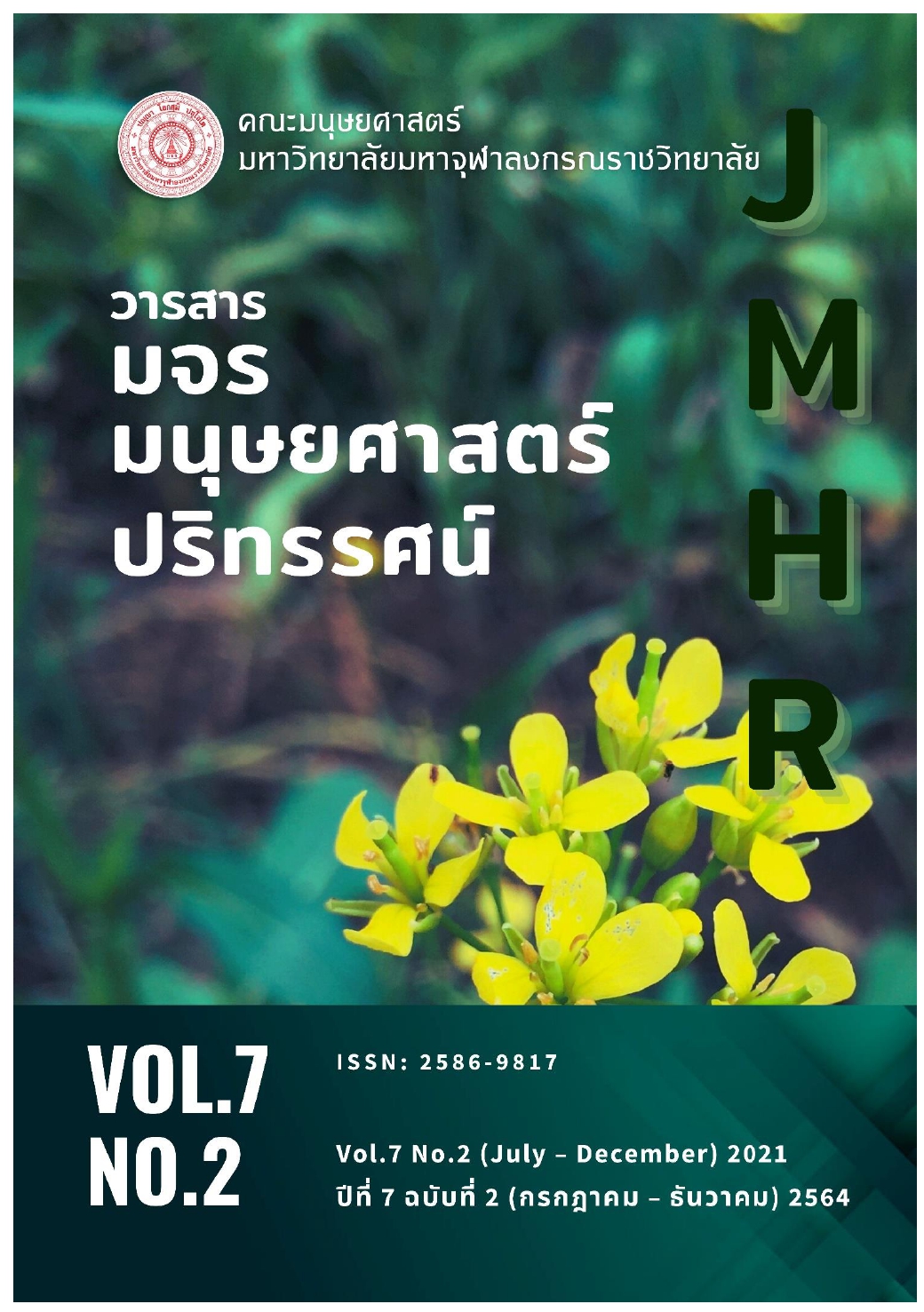Effects of Using Haiku Poems on Descriptive Paragraph Writing for EFL Learners
คำสำคัญ:
Haiku Poems, Descriptive, Paragraph Writingบทคัดย่อ
This study aimed to investigate the effects of using haiku poems on descriptive paragraph writing for EFL Learners. Lesson plans using haiku poem and achievement test were implemented to measure the impact of haiku poems on descriptive paragraph writing. This study found that the EFL learners gained higher post-test mean scores after engaging in descriptive paragraph writing along with haiku poems strategies. The frequencies of the language features and analysis the number of mistakes made by the students in their descriptive paragraph writing ability achievement tests after learning were lower than the mistake before learning. The findings determined a positive influence of haiku composition on the development of the descriptive paragraph writing skills of the participants of the study.
เอกสารอ้างอิง
Brown, H. Douglas. (2007). Teaching by Principles: An Interactive Approach to Language Pedagogy (Second Edition). New York: Longman.
Clouse, Barbara Fine. (2006). Patterns for a Purpose: A Rhetorical Reader (Fourth Edition). Now York: McGraw-Hill.
Cynthia A. Boardman and Jia Frydenberg. (2008). Writing to Communicate. New York: Perason Education.
Gould, J.S., &Gould, E.J. (1999). Four square writing method: Grade 3-5. Carthage, IL: Teaching and Learning Company.
Graham, S., Harris, K.R., & Mason, L. (2007). Best practices in teaching planning. In Graham,S., Macarthur, A., & Fitzgerald, J (Eds.), Best practices in writing Instruction (pp. 119-140). New York, NY: The Guilford Press.
Hanauer, D. I. (2011b). Meaningful literacy: Writing poetry in the language classroom. Language Teaching. Retrieved May 11, 2011 from http://journalscambridge.org.
“_____”. (2012). Meaningful literacy: Writing poetry in the language classroom. Language Teaching, 45(1), 105-115.
Hyland, K. (2003). Second Language Writing. Cambridge: Cambridge University Press.
Iida, A. (2010). Developing voice by composing haiku: A social-expressivist approach For teaching haiku writing in EFL contexts. English Teaching Forum, 48, 28-34.
“_____”. (2011). Revisiting haiku: The contribution of composing haiku to L2 academic literacy development. Unpublished Doctoral Dissertation, Indiana University of Pennsylvania.
“_____”. (2012a). Writing haiku in a second language: Perceptions, attitude, and emotions of second language learners. SINO-US English Teaching, 9, 1472-1485.
“_____”. (2016b). Poetic identity in second language writing: Exploring an EFL learner’s study abroad experience. Eurasian Journal of Applied Linguistics, 2(1), 1–14.
Juzwiak, C. (2012). Stepping Stones: A guided approach to sentences and paragraph (2nd ed.). Boston: Bedford/St. Martin’s.
Kirkgoz, Yasemin. (2008). Using Poetry as a Model for Creating English Poems. Journal of Language and Linguistic Studies, 4(2), 94-106.
Lazar, G. (1993). Literature and language teaching: A guide for teachers and trainers. Cambridge: Cambridge University Press.
Leticia Rodríguez-Fernández. (2019). Disinformation and organizational communication: A study of the impact of fake news. Revista Latina de Comunicación Social, 74, 1714 –1728.
Marpaung, T. (2017). Using collaborative sensory detail chart to increase number of content words of students’ descriptive writing. ELT in Asia in the Digital Era: Global Citizenship and Identity, 341.
McIlroy, T., Addison, N., Conway, N., Hunke, M., Iida, A., Tu, L., & Twitchell, A. (2015). Literature in language teaching SIG forum: Literature across borders. In P. Clements, A. Krause, & H. Brown (Eds.), JALT2014 Conference Proceedings. Tokyo: JALT.
Nilson, L. B., & Stanny, C. J. (2014). Specifications grading: Restoring rigor, motivating students, and saving faculty time. Sterling, VA: Stylus Publishing.
Okur, A., & Göçen, G. (2019). The effect of creative writing activities on elementary school students’ creative writing achievement, writing attitude and motivation. Journal of Language and Linguistic Studies, 15 (3), 1032-1044.
Panavelil, A. (2011). Teaching poetry in an ESL/EFL class: An integrative and communicative approach. ELT Voices – India: International Journal for Teachers of English, 1 (3), 11-20.
Spencer, L. (2005). A step by step guide to descriptive writing. New York: Rose Publishing Group Inc.






